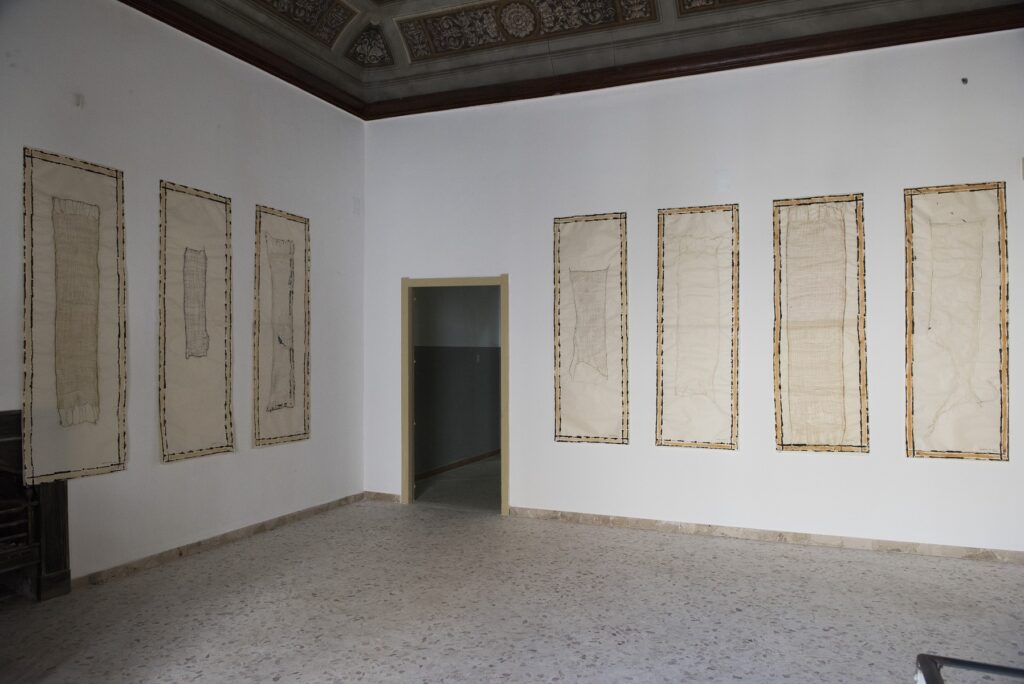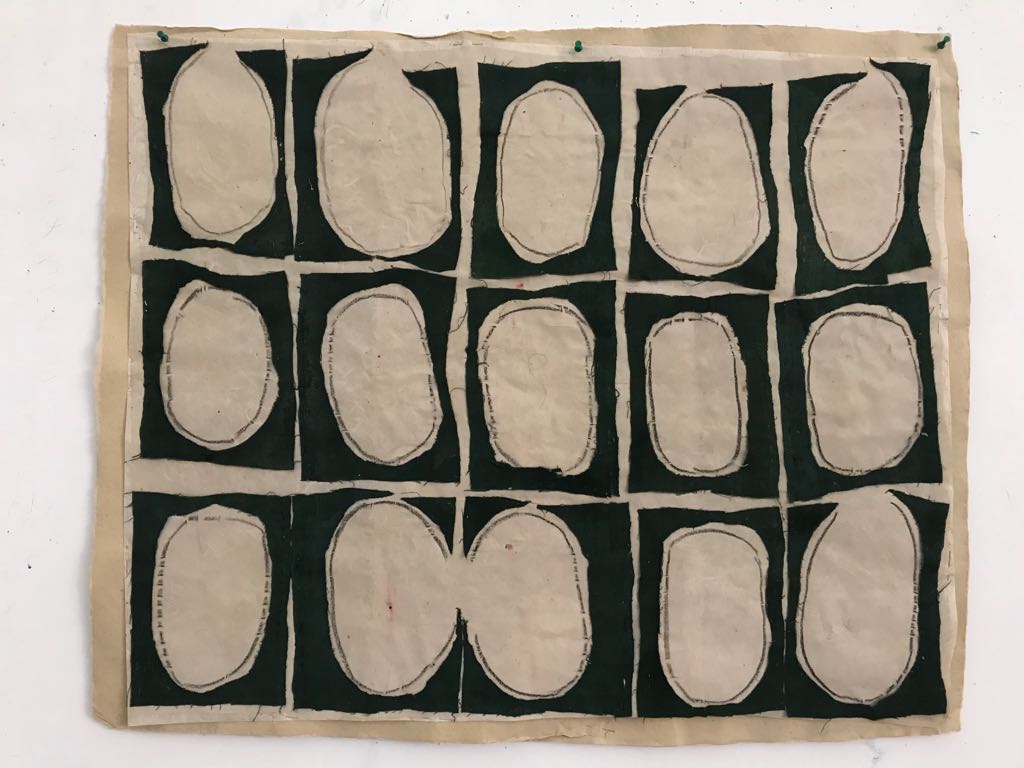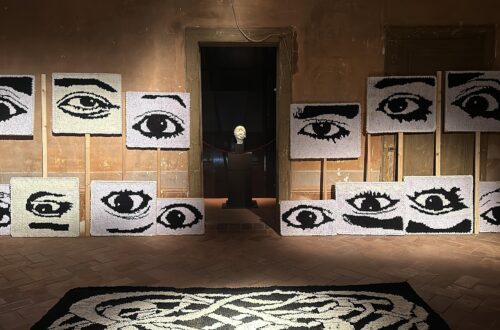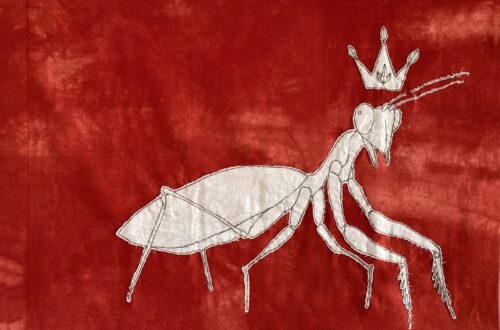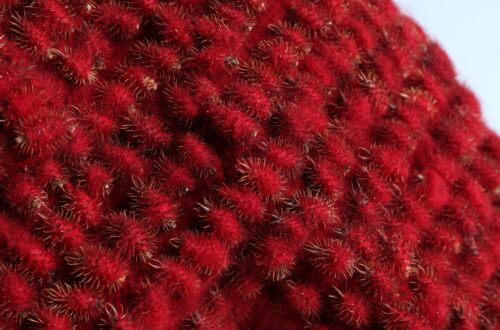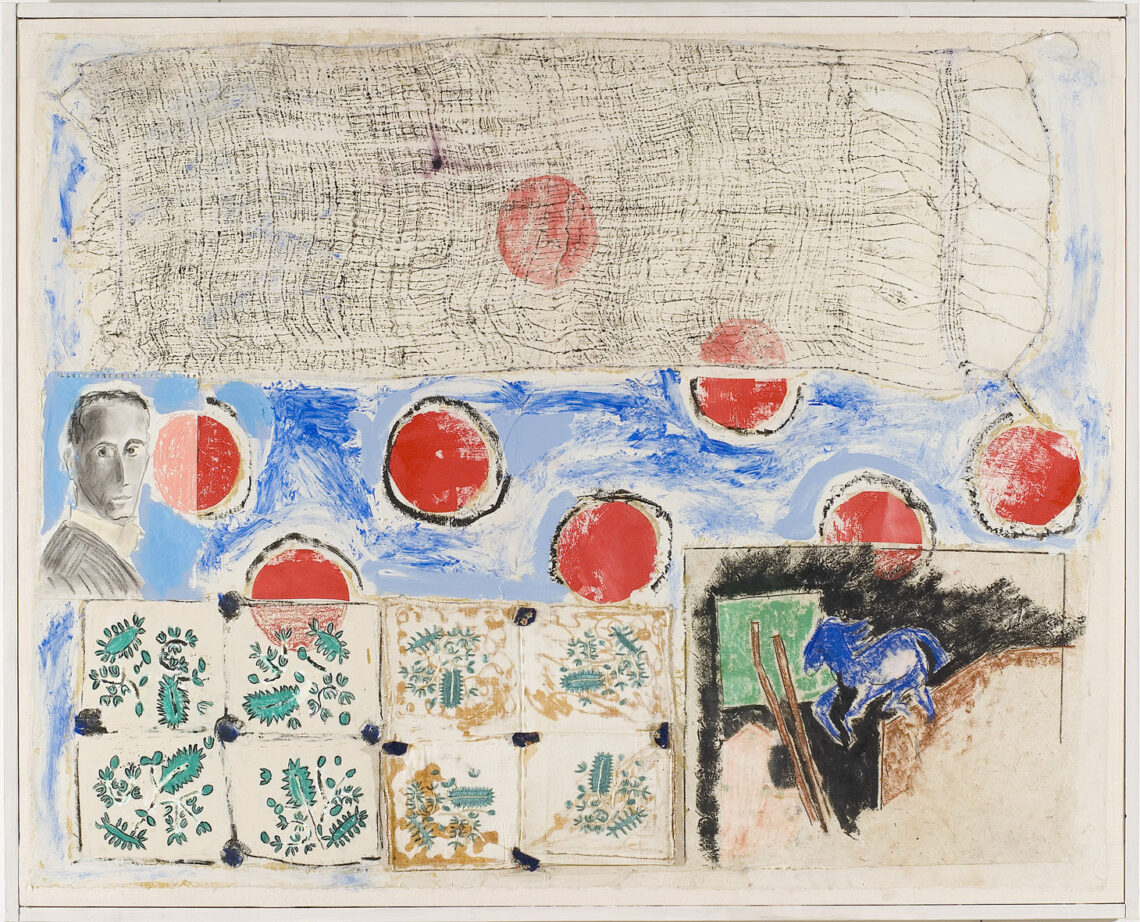
ISABELLA DUCROT: THE ART OF FABRIC BETWEEN RESEARCH AND POETIC MEDITATION
| by Maria Rosaria Roseo |
Isabella Ducrot, born in Naples and residing in Rome for many years, has developed a unique artistic path based on her passion for ancient fabrics. Through numerous journeys from Russia to the Far East, she has collected fine textiles that have become the core of her research and artistic production. Ducrot’s works have been exhibited in major institutions, including the National Gallery of Modern Art in Rome, the Archaeological Museum of Naples, the Venice Biennale, and prestigious international venues such as Berlin, Paris, and New York.
A central element of her work is the concept of repetition, often represented by the round shape — a motif the artist began to explore during a visit to a museum in Istanbul, where she was struck by the beauty of an ancient carpet decorated with red spheres arranged in a regular sequence.
This experience led her to reflect on the aesthetic potential of decoration and the entirely Western prejudice that, for centuries, has relegated ornamentation to the realm of applied arts, considered inferior. On that occasion, decoration assumed a central role in her artistic research.

The interest in Eastern textile traditions has had a profound influence on Isabella Ducrot’s work. In the West, figurative art is often linked to historical narration, whereas in the East, art is distinguished by its contemplative nature, celebrating a slowed-down sense of time. This approach has inspired her artistic exploration and led to the creation of artworks that evoke a dimension of reflection and meditation.
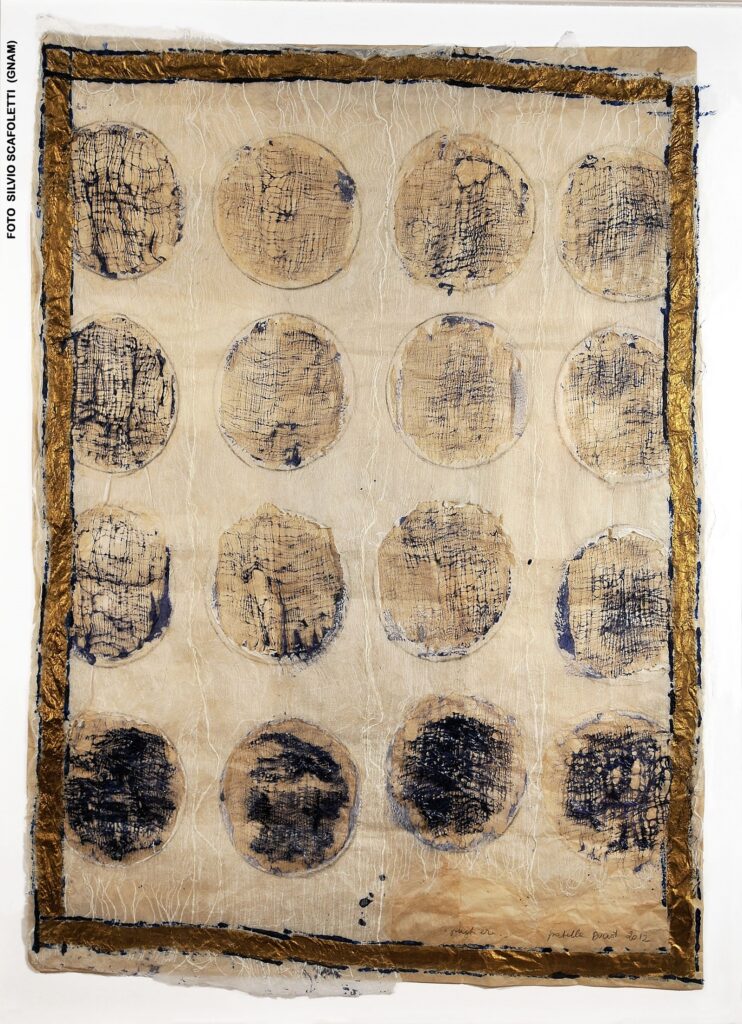
Isabella Ducrot’s relationship with textiles began in Eastern markets, where she started collecting fabrics different from the usual ones. For the artist, collecting means living with objects, touching them, studying their techniques, and understanding the differences in weaving. Over time, her interest shifted toward seemingly simple fabrics, yet crafted with extraordinary artisanal mastery — so much so that distinguishing between cotton, wool, or silk becomes difficult.
One of her most significant works, Turban, presented at Galleriske in Delhi in 2014, consists of a real turban, whose unrolling along an entire wall alters its perception. This treatment allows one to grasp its lightness and fine structure, highlighting its destined role of wrapping, in a swirl of gestures, around the wearer’s head.
Its length of eighteen meters translates into a presence that oscillates between material concreteness and symbolic evanescence.
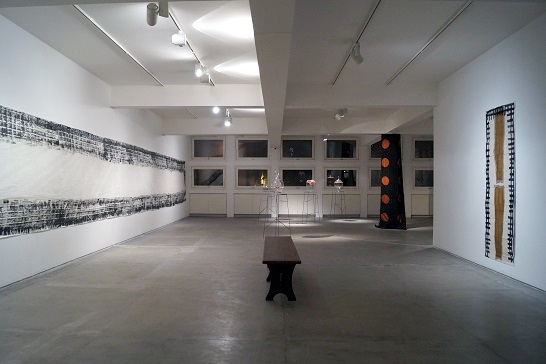
In 2008, in her solo exhibition Variazioni at the National Gallery of Modern Art in Rome, the artist exhibited a series of portraits of composers made with oil and pastel on canvas paper, collage of paper, plastic, and embroidered Turkish fabrics. The inspiration arose from an encounter in an Anatolian market with embroidered handkerchiefs that peasant women displayed at festivals as part of their dowry. The embroidery of these cloths, used as vestments, seemed very interesting to the artist—free from traditional decorative canons, with daring elements even reminiscent of Picasso.
At that time, Ducrot was reading Natasha’s Dance by Orlando Figes, which recounts the questions posed by Russian artists at the beginning of the twentieth century as they visited villages far from their cities to listen to songs and discover new musical instruments, drawing inspiration for new compositions. Thus, avant-garde music gained access to concert halls, theaters, and Western salons, gradually winning over audiences. The paintings in the exhibition represent Isabella Ducrot’s attempt to pay homage to these famous musical geniuses by portraying their faces while simultaneously showcasing the extraordinary work executed by women whose names we will never know, highlighting their fate of anonymity.
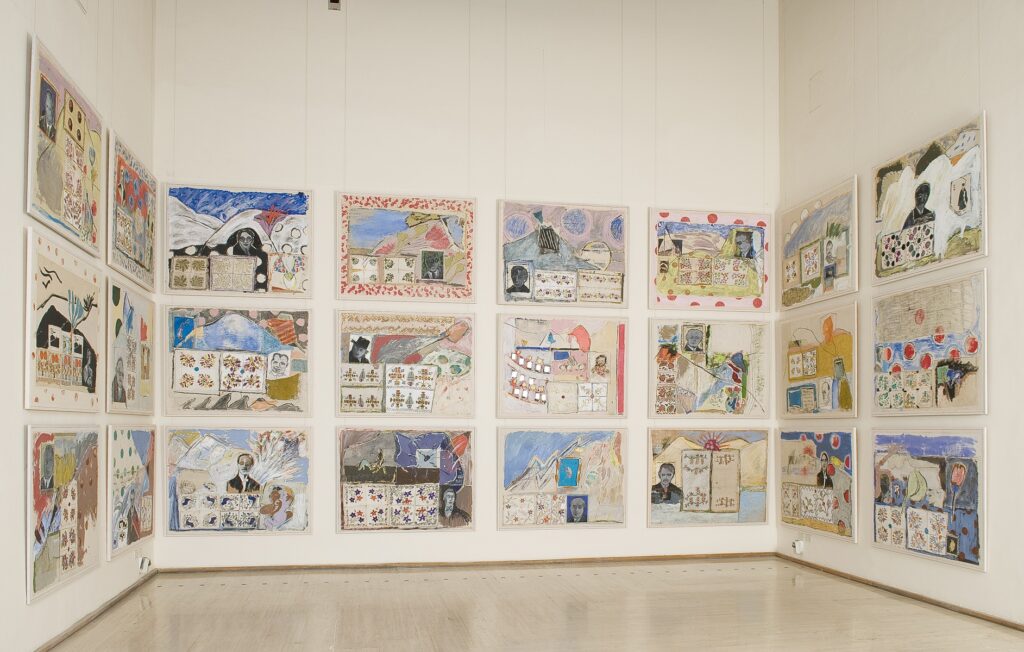
Another significant project was Bende Sacre, an exhibition held at the Gallery of Modern Art in Rome, based on Tibetan ritual bands purchased in Lhasa. These fabrics, stiffened with rice paste, were actually votive objects meant to cover the shoulders of sacred statues. Considering their exceptional historical and spiritual value, Ducrot chose to integrate them into her work, preserving their sacred character and aura of uniqueness.
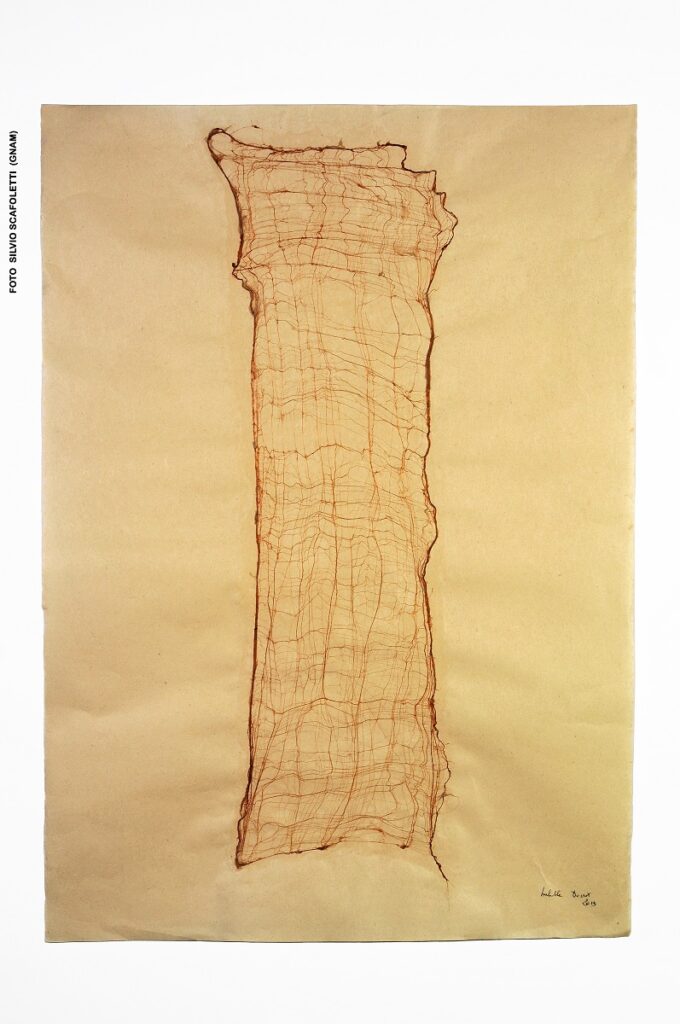
Isabella Ducrot is also the author of numerous texts and essays stemming from her study and interest in the history of textiles, which always remain central to her paintings and works. In one of her most recent publications, La stoffa a quadri, Ducrot describes her encounter with Simone Martini’s famous triptych of the Annunciation:
“The Annunciation immediately seemed like a mystery to me when, many years ago, during a visit to the Uffizi, I stopped to observe the great painting.”
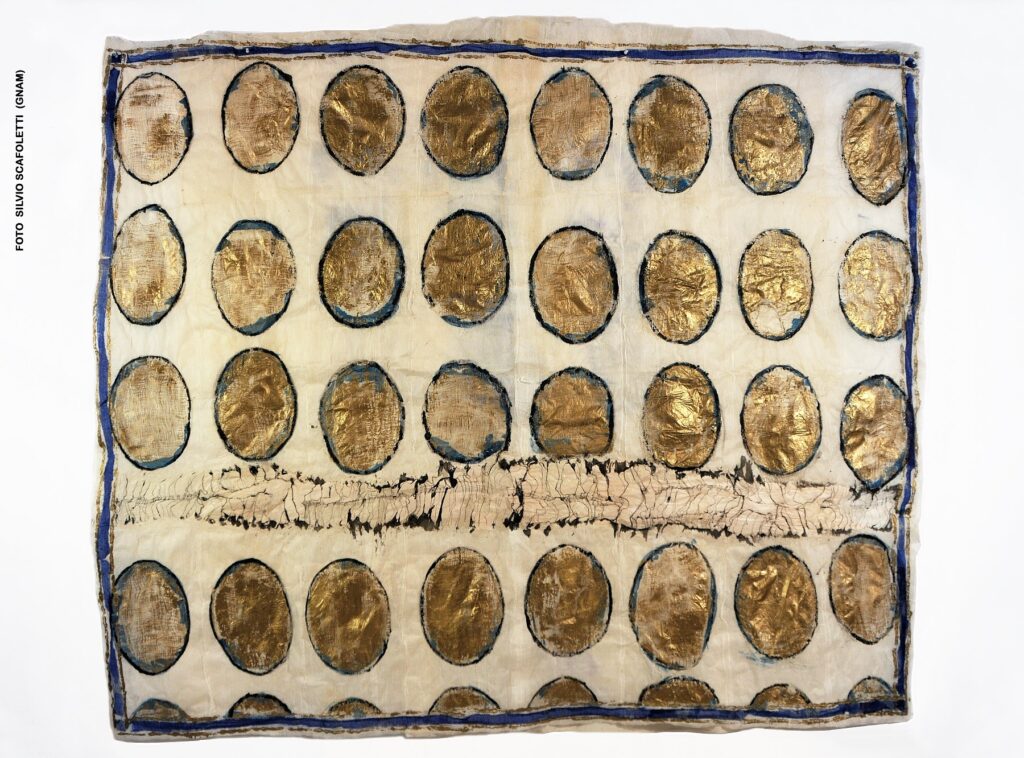
Starting from her fascination with the enigmatic edge of the angel’s cloak lining — a striking checkered fabric — Ducrot embarks on a reflection on the symbolic use of this textile motif in art history, a study that develops as an investigation into the aesthetic and conceptual values of a domestic element capable of evoking abstract meanings.
Isabella Ducrot offers us an artistic vision that intertwines history, aesthetics, and spirituality. Her research moves between the value of decoration, the importance of material, and the evocative power of fabric, transforming it into a universal, poetic language capable of narrating time and cultures.
